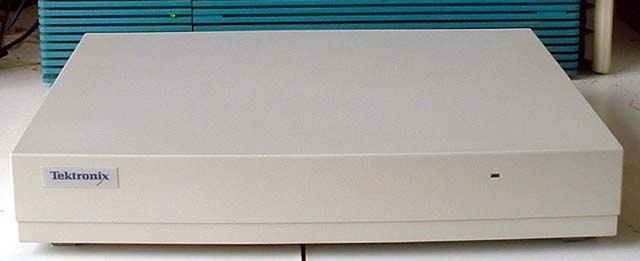

I recently acquired several of these X Terminals, but found there was little information on the 'net for them. So I decided to find out what I could and publish the results of my findings here. It's likely that, given their age, they will continue to appear on the market and so more people like me will end up with them, wondering if they're useful or not.
As it happens, they're useful, if you want remote graphical log-in onto other Linux/Unix machines on your network; also I've found that when controlled from another machine's mouse and keyboard with x2x (more on this later) they make a useful sort-of dual-head on the cheap. They support a good range of resolutions and scan-rates and usefully include a serial terminal emulator and telnet client.
These were made in the mid-late nineties by Tektronix, who are no longer in the thin-client business; they sold this business to NCD. The XP400-series is not a current product, and has been superseded.
The units I acquired are model XP419C; apparently this means they're XP400-series terminals, the last two digits being the size of monitor originally shipped (19-inch in this case.) The meaning of the `C' is yet to be determined, but these appear to be the basic, `low-spec' model, lacking such options as dual-head support, audio, hardware mpeg decoder; blanked-off holes for which appear tantalisingly on the rear panel.
These terminals require software located on a server in order to be useful. Two options exist, either the older Tektronix XpressWare (version 8.0 or later is apparently required for the XP400); or NCD's current NCBridge software. The older XpressWare is aparrently smaller and lighter; the NCBridge software has more bells and whistles.When turned on, the terminals obtain their IP address and other information via BOOTP, then load the software from the server using either NFS or TFTP.
A basic working knowledge of Unix-like operating systems is assumed; I'm not going to tell you how install Linux or go into the minutiae of configuring DHCP. I will give examples of what worked for me; ymmv...
The following are some of the capabilities available once the terminal has booted from the server, in each case these are provided by applications loaded from the server and run locally on the terminal.
This is not necessarily accurate, it reflects what information I've found elsewhere and particularly the specification of the units in my possession.

From left to right: